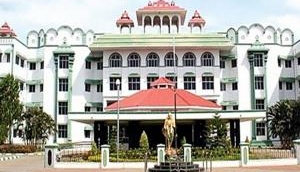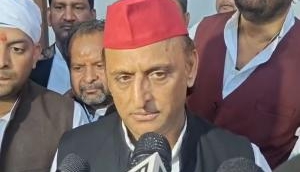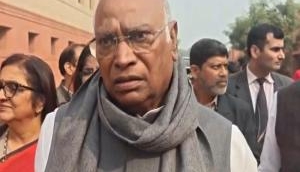
The Indian Constitution is not only one of the most exhaustive documents in the world, but it also has a rich history. Thursday, 26 November is being observed as the Constitution Day in India for the very first time - to commemorate Dr BR Ambedkar's contribution to the mammoth document.
Rooted in the Objectives Resolution moved by Jawaharlal Nehru on 13 December 1946, the Constitution turns 65 today and has been lauded as one of the best among all nations. Here are a few lesser known facts about the Indian Constitution that prove why it's worthy of our pride:
1. The members
The first Constituent Assembly originally had 389 members. Post partition, the number reduced to 299. On 29 August 1947, the Assembly set up a drafting committee under Ambedkar's chairmanship. The Assembly further constituted 13 committees to assist in framing the Constitution.
2. The power of 15
There were 15 women in the Constituent Assembly - a cadre whose profile is as vibrant as it was formidably qualified. This included Ammu Swaminathan, a political activist; Dakshayani Velayudan, a dalit leader; Begum Aizaz Raisul, the only Muslim woman in the Assembly; freedom fighters, lawyers, Gandhians and even women who had gone to jail in the freedom movement.
Other notable women include Renuka Ray, who argued against reservations for women, calling it an "insult" to women's "intelligence and capacity", Vijalakshmi Pandit and bulbul-i-hind Sarojini Naidu.
3. Get your numbers right
Drafted over a period of 165 days, the Assembly met over a span of 2 years, 11 months and 18 days for eleven sessions. Of these, 114 days were spent considering the Draft Constitution.
During this time, the Assembly deliberated and rejected about 2,473 amendments out of a total of 7,635 introduced.
4. Documenting pre-My Documents folders
At the time of its inception, typewriters and printers were not used at all. The original document was written in calligraphy by Prem Behari Narain Raizada.
While Ambedkar is well known as 'the architect' or 'the father of the Constitution', little is known about Raizada in the mainstream. He was a St Stephens College graduate and learnt the art of calligraphy from his grandfather. He refused to take any payment for writing the Constitution - a task he completed in 6 months.
5. Some more art
Not only was the Constitution hand-written in both English and Hindi but each page adorns the intricate artwork by artists Beohar Rammanohar Sinha and Nandalal Bose from Santiniketan.
Each page had a frame and a full page of artwork that punctuated each section. Before the beginning of a new section, Bose's artwork represented a significant period from Indian history. While figures like Buddha, Mahavira and Ashoka have been recreated on paper, so have Tipu Sultan, Lakshmibai and Shivaji.
These copies are now stored in helium filled compartments in the Library of the Parliament of India.
6. Signatures, both physical and ideological
The signatures of the Constitution makers span over 11 pages and are included before the list of languages in the 8th schedule. Out of the 299 members, only 284 signed the Constitution and while most signatures are in English, there are a few who signed their names in Devnagri. Abul Kalam Azad signed his name in Urdu.
Mahatma Gandhi's signature is missing from the list. Though he died on 30 January 1948, the Gandhian spirit manifests itself in various statutes of the Constitution aimed towards social change.
7. The Preamble's real deal
The Preamble, also called the 'soul' of the Constitution, does not actually hold any legal implications but is meant to establish an ideal roadmap for economic, social and political justification of the Constitution as well as the policies formed on its basis.
It defines India as a "sovereign secular socialist democratic republic" and is meant to instil a space for brotherhood, inclusiveness, justice and tolerance.
8. Borrowed, not stolen
The Constitution makers, while firmly having their feet set in the principle of self-rule, did not refrain from borrowing the practices they deemed best from foreign constitutions. The Indian Constitution imbibes influences from American, British, Australian and Canadian constitutions among others.
The parliamentary system, rule of law and single citizenship are taken from the Constitution of the UK. Provisions for independent judiciary and fundamental rights come from the American Constitution. The quasi-federal model (federal in in nature with devolution of power, but unitary in spirit with a strong center) is borrowed from Canada. The statutes pertaining to emergency are similar to those in the Weimer Constitution and the Directive Principles of State Policy have been influenced by the Irish Constitution.
9. Republic Day = Constitution adoption day
The Constitution was finally adopted on 26 January 1950 which is observed as Republic Day each year.
Co-incidentally, it was on the same day in 1965 that Hindi was adopted as the official language.
10. A 'lawyer's paradise'
This is because it is allegedly written in a way that can only be understood by someone who is comfortable with the language used in courts of law.
The Indian Constitution shares a rather cozy relationship with the judiciary. While it is true that other two arms of the governance - the executive and legislature - also draw power from the constitution, the the right to interpret the Constitution lies exclusively with the Supreme Court.
This allows the Supreme Court to strike down amendments that threaten the basic structure and purpose of the Constitution - to act as a set of guidelines for the executive, legislature and judiciary while safeguarding the principles of democracy derived from people's choice.







![BJP's Kapil Mishra recreates Shankar Mahadevan’s ‘Breathless’ song to highlight Delhi pollution [WATCH] BJP's Kapil Mishra recreates Shankar Mahadevan’s ‘Breathless’ song to highlight Delhi pollution [WATCH]](https://images.catchnews.com/upload/2022/11/03/kapil-mishra_240884_300x172.png)

![Anupam Kher shares pictures of his toned body on 67th birthday [MUST SEE] Anupam Kher shares pictures of his toned body on 67th birthday [MUST SEE]](https://images.catchnews.com/upload/2022/03/07/Anupam_kher_231145_300x172.jpg)






